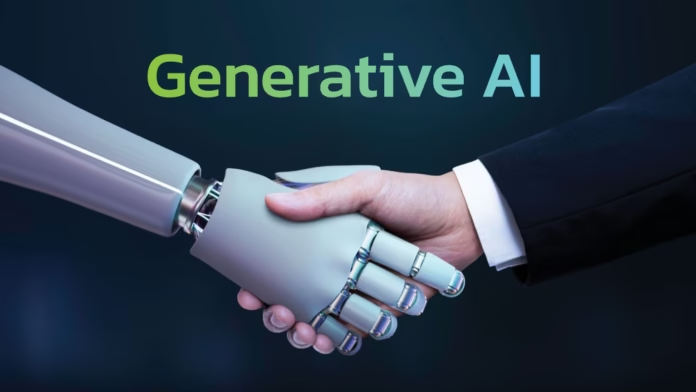Generative AI is quietly reshaping the enterprise world, but not in the ways most people expect. Its greatest impact isn’t in flashy pilots or visible product demos—it’s in the invisible, daily improvements that reduce inefficiencies, remove friction, and reset the baseline of how work flows. This is what real business transformation looks like: consistent, reliable progress that integrates seamlessly into existing systems.
The Myth of Visible AI Innovation

Walk through any enterprise today, and you’ll find visible signs of generative AI adoption. An onboarding chatbot answering questions on the intranet. Reports generated with a single click. Teams experimenting with AI-powered summarization tools. These innovations are tangible and easy to showcase in internal presentations, often celebrated as “proof” of digital transformation.
But the deeper reality is different. True transformation rarely begins with high-profile projects. Instead, it starts with subtle, behind-the-scenes improvements—those that don’t carry the AI label, don’t need ownership, and don’t require large-scale rollouts. Yet, they quietly reshape the way work gets done.
Generative AI as a Layer of Relief

Unlike past automation cycles that brought job shifts or massive system overhauls, generative AI works differently. It doesn’t demand new platforms, mandatory training, or major migrations. Instead, it integrates into existing workflows—documents, spreadsheets, emails, portals—and makes them easier to work within.
It acts as a layer of relief. A form that once took hours to complete now fills itself. A first draft arrives half-written. A document edits itself just enough to avoid another review cycle. None of these changes alone feels revolutionary, but together, across departments, they lighten workloads, improve efficiency, and make work feel smoother.
Invisible Efficiency, Visible Outcomes
What’s remarkable is how this transformation shows up. There are no Gantt charts, no sudden spikes in productivity, no sweeping announcements. Instead, friction disappears. Approvals that once dragged for days now move forward seamlessly. Processes that used to break quietly start working.
The result is not radical disruption, but reliability—a steady rhythm of operations where fewer things get stuck. Over time, this consistency builds trust. Employees don’t necessarily notice the AI itself; they notice that tasks are resolved faster, workflows break less often, and systems feel easier to use.
Why Generative AI Fits Real-World Enterprises
Generative AI thrives in messy, real-world environments. It doesn’t require perfect data or structured inputs. Instead, it adapts to scattered formats, informal conventions, and legacy workflows that organizations rely on. It addresses long-standing inefficiencies once thought “too embedded” to fix—approval delays, unclear handovers, document-heavy tasks—by quietly removing friction at the edges.
This flexibility allows AI to touch processes that were once untouchable, the ones held together by instinct, email chains, and memory. Without requiring new ownership or formal change programs, these processes simply start working better.
The Compounding Effect of Subtle AI Integration

The strength of this transformation lies not in speed or scale, but in consistency. Every invisible improvement compounds. Teams begin to expect smoother workflows. Confidence in systems rises. Employees feel less weighed down by administrative mechanics and more focused on meaningful decision-making.
And when AI quietly disappears, its absence is felt. A process feels heavier again. A task that once seemed effortless becomes frustrating. This is how adoption spreads organically—not because leaders mandate it, but because people experience the benefits firsthand and keep using it.
Building Environments for AI-Led Progress

For leaders guiding this change, the challenge is not strategy but cultivation. It’s about encouraging environments where invisible gains can take hold and compound over time. Recognizing that subtle improvements—when multiplied across hundreds of tasks—form the foundation of enterprise-wide transformation.
Because this is what deep transformation actually looks like. Not volume. Not velocity. But consistency. A steady reduction in friction that, over time, becomes the new normal.


